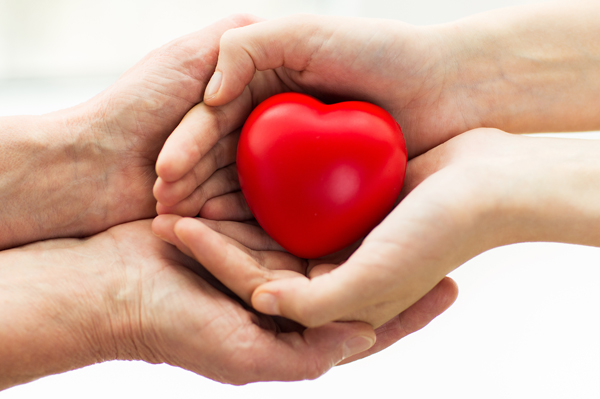
29 Heart Facts for #HeartMonth 2016
As Heart Month 2016 comes to an end we thought it would be a great time to recap by sharing all 29 of this year’s facts that we have been releasing daily on social media. We have been sharing a Fact of The Day every day on Twitter, Facebook and Google+ to promote #HeartMonth and spread awareness for heart disease. If you haven’t done so already, be sure to connect with us:
Here are our 29 #HeartMonth Facts:
1. The hardest-working muscle in your body is your heart.
2. The heart pumps out 2 ounces of blood at every heartbeat, adding up to at least 2,500 gallons daily.
3. The heart has the ability to beat over 3 billion times in a person’s life.
4. Hearts exposed to pollution are also at higher risk for arrhythmias.
5. Your left lung is smaller than your right to make room for your heart.
6. Your heart is dead center in the middle of your chest.
7. The average heart weighs between 7 and 15 ounces (roughly the size of an apple).
8. Women’s hearts beat faster then mens; 78 beats per minute vs. 70 beats per minute.
9. Happiness and a strong sense of emotional vitality helps lower your risk of heart disease.
10. Heart disease has been found in 3000 year old mummies from ancient Egypt.
11. The heart beats 100,000 times per day.
12. The right side of your heart pumps blood to your lungs while the left side of your heart pumps blood back into the body.
13. Heart cancer is very rare because heart cells stop dividing early in life.
14. A kitchen faucet would need to be turned on all the way for at least 45 years to equal the amount of blood pumped by the heart in an average lifetime.
15. Every day, the heart creates enough energy to drive a truck 20 miles. In a lifetime, that is equivalent to driving to the moon and back.
16. Because the heart has its own electrical impulse, it can continue to beat even when separated from the body, as long as it has an adequate supply of oxygen.
17. The heart pumps blood to almost all of the body’s 75 trillion cells. Only the corneas receive no blood supply.
18. The “thump-thump” of a heartbeat is the sound made by the four valves of the heart closing.
19. At night, it’s common for heart rates to drop below 60 bpm. Some people even have rates in the 40s while sleeping.
20. Depression increases your risk for a heart attack, especially if you’re a woman.
21. A recent study by Swedish researchers showed that when a choir sings, their hearts rhythms synchronize.
22. The blue whale has the largest heart weighing over 1,500 pounds.
23. The number of heart attacks peaks on Christmas Day, followed by December 26th, and then New Year’s
24. You are also more likely to have a heart attack on Monday morning than any other time
25. Worldwide, 17.3 million people die every year from heart disease or stroke, which account for 31 per cent of all deaths.
26. Aristotle believed that the heart was the source of intelligence and the main function of the brain was to cool our blood.
27. The words ‘heart’ and ‘blood’ can be found in every one of Shakespeare’s plays.
28. A hummingbird’s heart beats about 20 times a second. A blue whale’s heart beats between four and eight times a minute.
29. This is your last chance to save $100 on an Automated External Defibrillator! Promotion ends February 29, 2016.
